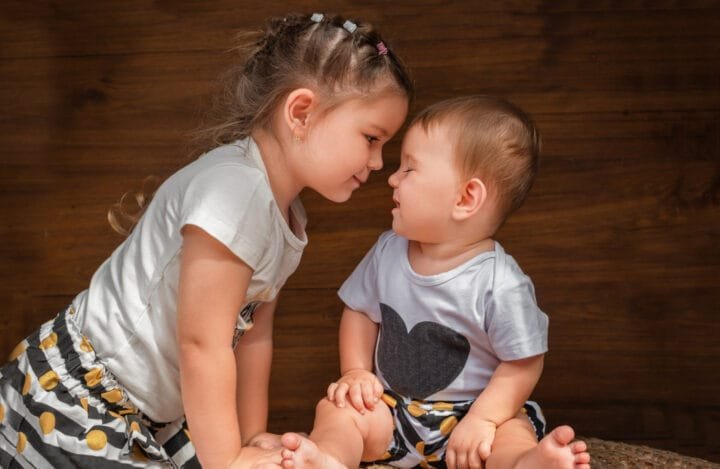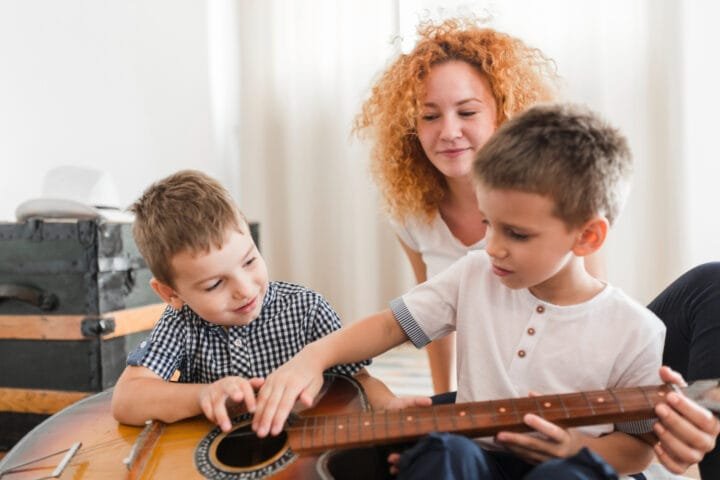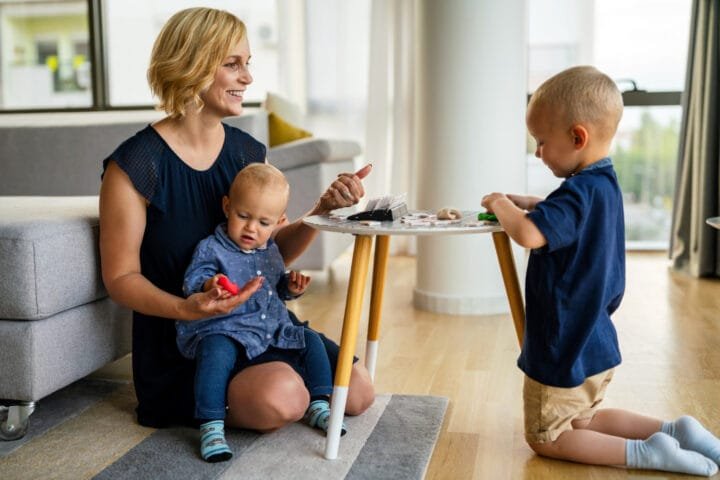“My Adult Son Refuses to Say I’m Sorry”: Is It a Sign of Deeper Issues?
Beyond “My Child Misbehaves in School by Crying”: Effective Strategies for Tearful School Drop-Offs

Anatomy Education for Kids: At What Age Do Children Typically Understand Anatomy?
The Must-Have Guide for Eco-Conscious Parents: Teaching Kids About Sustainable Fashion
Elevate Your Child’s Education: The Power of Space Exploration for Young Minds
Teaching Negotiation Skills: Raise Cooperative Kids for Success
Birdwatching for Children: The Ultimate Guide to Backyard Exploration
Master the Art of Teaching Kids About Ecosystems
Why Do Kids Hate Healthy Foods? And How to Make Them Love It!
Why Kids Are Not Treating Toys Properly (And What You Can Do)
Unstoppable Kids: The Ultimate Guide to Yoga for Children
Montessori: The Future of Education or Just a Fad?
Significance of Nicknames: Discovering the Hidden Power in a Child’s Name
Helping Children Cope with Pet Loss: When a Furry Friend Says Goodbye
The Role of Grandparents in Modern Family: Why They’re Essential for Your Kids
Stop Shielding Your Child! Why Disappointment and Failure Are Their Secret Weapons
The Leader in Every Child: Nurture Their Potential with These Powerful Leadership Skills
Conquer Mealtime Mayhem: Expert Advice for Taming the Picky Eater
Childhood Nightmares and Night Terrors: What Every Parent Needs to Know
Anatomy Education for Kids: At What Age Do Children Typically Understand Anatomy?

Unlocking the Secrets of the Human Body: A Child’s Journey of Anatomical Discovery
Picture this: your five-year-old, eyes wide with wonder, points to their chest and asks, “What’s that thing that goes thump-thump?” Or perhaps your eight-year-old, fresh from a school lesson on digestion, declares with a giggle, “So, my tummy is like a food blender!” These moments, brimming with curiosity and awe, are the cornerstones of a child’s adventure into the world of anatomy. As parents and educators, we have the privilege of guiding them through this fascinating landscape, nurturing their innate curiosity, and fostering a lifelong love of learning about their incredible bodies.
But this journey is about more than just identifying body parts. It’s about empowering children with knowledge, igniting their passion for science, and building a foundation for a healthy relationship with their bodies. In this comprehensive guide, we’ll delve into the stages of anatomical understanding in children, explore effective strategies for teaching them about their bodies, and address common questions and concerns that parents often face, including “At what age do children typically understand anatomy?”
The “Why” Behind the Wonder: Decoding Children’s Fascination with Their Bodies
Children are natural-born explorers, driven by an insatiable curiosity to understand the world around them. Their fascination with their bodies unfolds in stages, fueled by a dynamic interplay of sensory exploration, cognitive development, and social interaction. This begs the question: At what age do children typically understand anatomy?
- Sensory Exploration: From the moment they enter the world, babies embark on a sensory exploration of their bodies and surroundings. They touch, taste, hear, and see, establishing a profound connection with their physical selves. This early exploration forms the bedrock for understanding their bodies. As Dr. Maria Montessori eloquently stated, “The senses, being the explorers of the world, open the way to knowledge.”
- Cognitive Development: As children’s brains grow and mature, they gain the ability to grasp increasingly complex concepts. They transition from simply identifying body parts to understanding their functions and intricate interconnections. This cognitive leap fuels their curiosity, leading them to ask more sophisticated questions and seek deeper explanations about their bodies. This stage plays a crucial role in determining at what age children typically understand anatomy.
- Social Learning: Interactions with others play a pivotal role in shaping children’s understanding of the body. By observing their parents, siblings, and friends, they learn about body language, emotional expression, and social cues. These interactions provide valuable insights into how the body functions in social contexts, enriching their understanding of its role in communication and relationships.
The research underscores the significance of parental involvement in nurturing children’s anatomical understanding. A study published in Child Development found that children who engage in frequent conversations about their bodies with their parents tend to have a more advanced knowledge of anatomy. This highlights the crucial role of parental interaction in fostering curiosity and facilitating learning, which ultimately influences at what age children typically understand anatomy.
Why is Understanding Anatomy So Important?
Anatomy is far more than just memorizing the names of body parts. It encompasses a profound understanding of how the body functions as a whole, how to maintain its health, and an appreciation for its remarkable capabilities. Learning about anatomy offers a myriad of benefits for children, including:
- Increased Health Awareness: Understanding how their bodies work empowers children to make informed decisions about their health. They learn about the importance of nutrition, exercise, and sleep, laying the foundation for healthy habits that can last a lifetime.
- Deeper Understanding of Their Bodies: Knowledge of anatomy fosters a sense of ownership and responsibility for their bodies. It helps children understand and appreciate the intricate processes that keep them alive and thriving.
- Potential Lifelong Interest in Science: Exploring the human body can spark a passion for science and a desire to learn more about the natural world. This early exposure to scientific concepts can pave the way for future academic pursuits in STEM fields.
To make anatomy fun and engaging, focus on interactive learning experiences that capture children’s imaginations and spark their enthusiasm. Hands-on activities, games, and creative exploration can transform learning about the body into an exciting adventure.
A Roadmap to Anatomical Understanding: From Tiny Explorers to Budding Biologists
Children develop at their own unique pace, and their understanding of anatomy is no exception. However, we can identify general stages in their anatomical journey, each characterized by distinct milestones and learning opportunities. These stages provide a framework for understanding at what age children typically understand anatomy.
Early Awareness (Ages 2-4): “My Body is My Playground!”
At this stage, children are all about hands-on exploration. They are like little scientists, conducting experiments on themselves – poking, prodding, and giggling their way to a basic understanding of their bodies. They learn to name body parts, mimic actions, and grasp simple functions like eating and sleeping.
- Body Part Recognition: Introduce body parts through interactive play and questioning. “Where is your nose?” “Can you touch your toes?” Picture books, interactive songs, and even bath time can become opportunities for learning.
- Simple Functions: Introduce basic concepts like breathing, eating, and sleeping. “When you breathe in, your tummy goes up! When you breathe out, it goes down.” Demonstrating these actions can pique their interest and make learning fun.
Expert Tip: Dr. T Berry Brazelton, a renowned pediatrician and child development expert, emphasizes the importance of responsive parenting in these early years. He suggests, “Follow your child’s lead. Observe what they’re interested in and provide opportunities for them to explore those interests.”
Developing Concepts (Ages 5-7): “My Tummy Rumbles and My Heart Beats!”
As children enter preschool and kindergarten, their cognitive abilities undergo a period of rapid expansion. They are now ready to delve deeper into the inner workings of their bodies. This is an ideal time to introduce basic concepts about internal organs and systems clearly and simply.
- Internal Organs: “Your heart is like a pump that sends blood all over your body.” “Your stomach is like a mixing bowl where your food gets mashed up.” Use simple diagrams, models, and age-appropriate books to bring these concepts to life.
- Bodily Processes: How do we breathe? How do we digest food? How do cuts heal? Answer these questions with clear explanations and relatable analogies. “When you breathe in air, your lungs fill up like balloons.”
- Addressing Fears and Misconceptions: Young children may develop fears or misconceptions about their bodies, particularly related to illness or injury. It’s crucial to address these fears with sensitivity, empathy, and reassurance.
Research Finding: A study published in the journal Pediatrics found that children who have a basic understanding of their bodies are less anxious about medical procedures. This highlights the importance of early anatomical education in promoting children’s emotional well-being.
Growing Knowledge (Ages 8-10): “My Body is a Super-Powered Machine!”
Older children are ready for a more in-depth and complex exploration of the human body. They can learn about the different systems, their functions, and how they work together in harmony. This is a great time to introduce more complex concepts and encourage critical thinking.
- Systems and Functions: Explore the circulatory, respiratory, nervous, and skeletal systems. Explain how each system contributes to the overall functioning of the body and how they are interconnected.
- Interconnectedness: Help children understand the synergy between different systems. “When you run, your heart beats faster to pump more blood to your muscles, and your lungs work harder to bring in more oxygen.”
- Healthy Habits: Emphasize the importance of healthy habits like nutritious eating, regular exercise, and sufficient sleep. Explain how these habits support the different systems in their bodies and contribute to overall well-being.
Statistic: The American Academy of Pediatrics recommends that children get at least 60 minutes of physical activity per day. Encourage children to find activities they enjoy and make physical activity a regular part of their lives.
Navigating Tricky Topics: “The Birds and the Bees” (and Everything in Between)
Let’s face it: those inevitable questions about where babies come from, puberty and body changes can leave even the most seasoned parent feeling a bit tongue-tied. However, these conversations are crucial for helping children develop a healthy understanding of their bodies and sexuality.
- Private Parts and Body Safety: Start early by teaching children the anatomically correct names for their genitals. Explain that these parts are private and that it’s important to set boundaries. This promotes body literacy and empowers children to speak up if they experience uncomfortable or inappropriate touch.
- Answering Questions About Reproduction: When questions about where babies come from arise, answer honestly and directly with age-appropriate language. Start with simple explanations and provide more detail as children mature. Books and resources designed for this purpose can be invaluable tools.
- Discussing Puberty and Body Changes: As children approach puberty, prepare them for the physical and emotional changes that lie ahead. Explain that these changes are a normal part of growing up. Be open and approachable, creating a safe space for them to ask questions and express their feelings.
Expert Insight: Dr. Laura Markham, a clinical psychologist and parenting expert, advises parents to “approach these conversations with a matter-of-fact attitude. Avoid giggling or acting embarrassed, as this can convey that these topics are shameful or taboo.”
Busting Body Myths: Separating Fact from Fiction
Children often develop misconceptions about their bodies, influenced by misinformation from peers, media, or even well-meaning adults. It’s crucial to help them separate fact from fiction and cultivate critical thinking skills.
- Myth: We only use 10% of our brains. Reality: We use all parts of our brains! Different areas of the brain have other functions, and we need all of them to work together for optimal brain function.
- Myth: Cracking your knuckles causes arthritis. Reality: The popping sound is simply caused by gas bubbles escaping from the joints. It’s harmless, though it might annoy those around you!
- Myth: If you swallow gum, it stays in your stomach for seven years. Reality: While your body can’t digest gum, it doesn’t stick around for years. It passes through your digestive system and is eliminated like other waste products.
- Myth: Eating carrots will give you night vision. Reality: While carrots are rich in Vitamin A, which is essential for eye health, they won’t give you superhuman vision or the ability to see in the dark.
Encourage Critical Thinking: Teach children to question information they hear about their bodies. Encourage them to ask, “Where did you hear that?” or “Is there evidence to support that claim?” This fosters healthy skepticism and helps them develop the ability to evaluate information critically.
Learning Through Play: Making Anatomy an Adventure!
Learning about anatomy shouldn’t be confined to textbooks and lectures. Make it an adventure with hands-on activities, games, and creative exploration!
- Interactive Games: Create a life-sized body outline on the floor using butcher paper or tape and let your child place organ cutouts in the correct locations. Play a game called “Operation” to learn about different body parts and their locations. Build a skeleton model together using craft materials or a kit.
- Creative Expression: Encourage children to express their learning through art, music, or storytelling. They could draw pictures of their bodies, write songs about their organs, or create stories about their cells going on an adventure.
- Technology and Online Resources: Explore interactive anatomy websites, educational videos, and virtual reality experiences that bring the human body to life. There are many fantastic resources available online that can make learning about anatomy engaging and fun.
Research Finding: A study published in the British Journal of Educational Technology found that incorporating technology into anatomy education can significantly enhance student engagement and learning outcomes.
Nurturing a Lifelong Love of Learning: The Journey Continues
Learning about anatomy is not a one-time event; it’s a lifelong journey of discovery. By fueling children’s excitement, providing accurate information, and creating a safe and supportive learning environment, we can foster a healthy body image, promote health literacy, and inspire a lifelong love of learning. At what age do children typically understand anatomy well enough to embark on this journey? It varies, but by nurturing their curiosity, we can set them on the right path.
Remember: It’s okay if you don’t have all the answers! What’s most important is nurturing their curiosity and creating an environment where they feel comfortable asking questions and exploring the wonders of their bodies.
One Last Thing:
As children embark on their anatomical adventure, emphasize respect and appreciation for this remarkable machine we call the human body. Help them understand that even the most complex machines built by humans pale in comparison to the intricate design and capabilities of the human body. By fostering a sense of wonder and providing them with the tools to explore, we can empower children to become active participants in their health and well-being, setting the stage for a lifetime of healthy choices and a deep appreciation for the miracle of life.
FAQs
Children’s curiosity about their bodies often begins around the ages of 2-4, during the “Early Awareness” stage. This is when they start exploring their bodies through touch and movement and begin asking simple questions like, “What’s this?” or “Where’s my tummy?”
Use simple language, relatable analogies, and visual aids like diagrams or models. For example, you could explain the heart as a “pump” that sends blood throughout the body or the lungs as “balloons” that inflate and deflate when we breathe.
Acknowledge their fears and provide reassurance. Explain that the body has amazing ways of protecting and healing itself. You can also use stories or examples of how the body recovers from minor injuries to build their confidence and understanding.
Put what you have learned into action! Use games like “Operation,” or outline people’s bodies on the floor. Encourage them to draw, tell stories, or even make things if they want to. Use the internet and other sources: find interesting websites or educational videos.
Please encourage them by patiently and truthfully answering their questions. Allow them to explore and experiment with concrete materials. Have them play interesting games, work on fun activities, and do craft projects. Above all, instill in them the desire to learn new things and the will to search for more throughout their lives.
Related Posts







































































